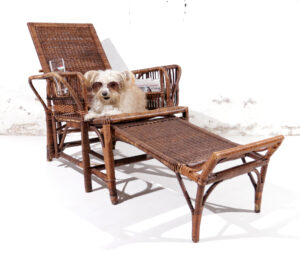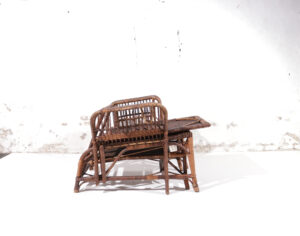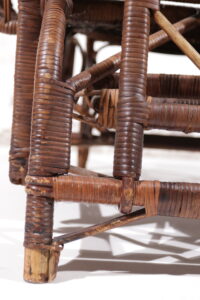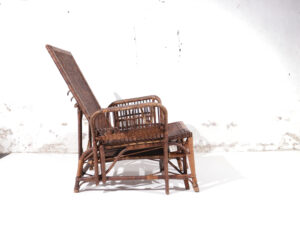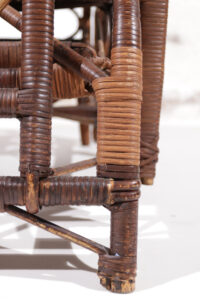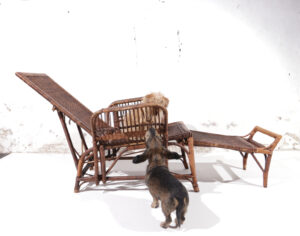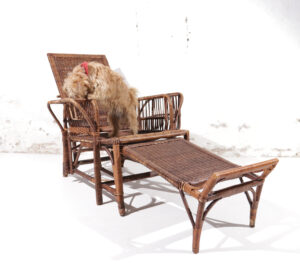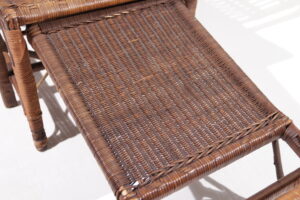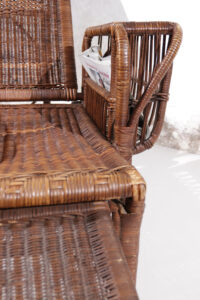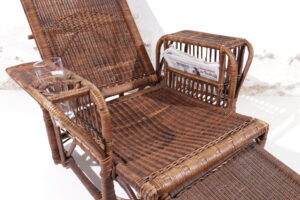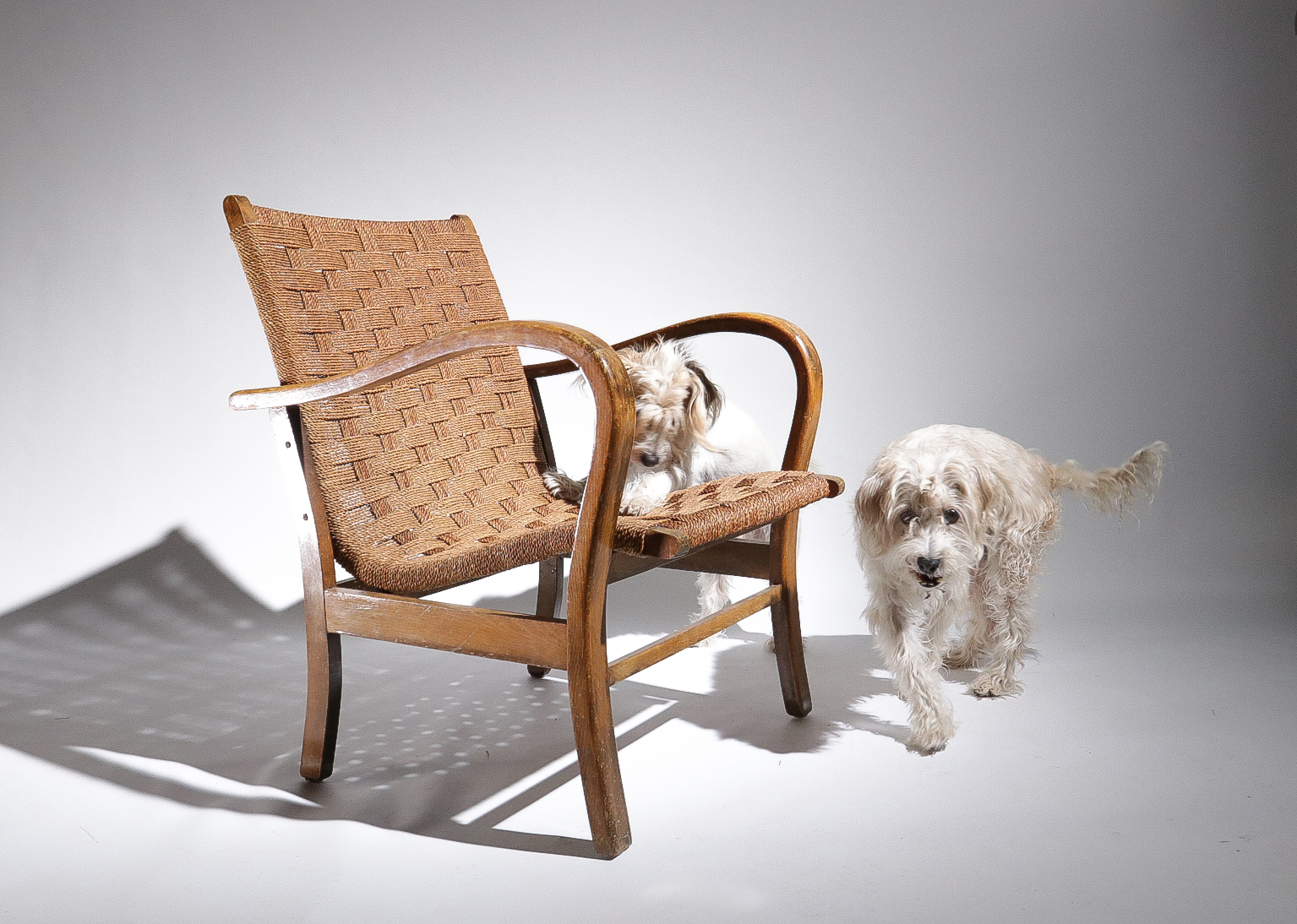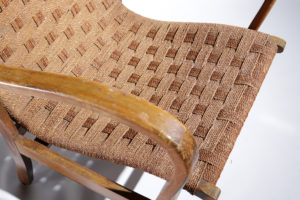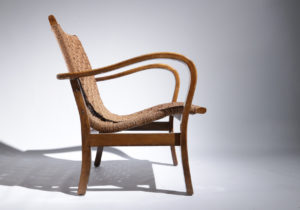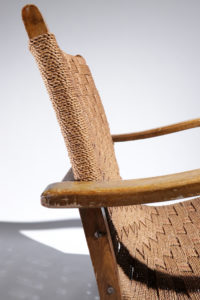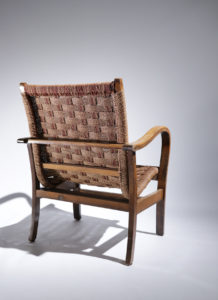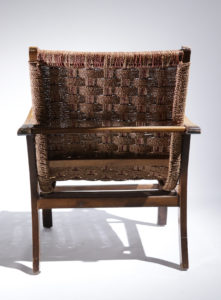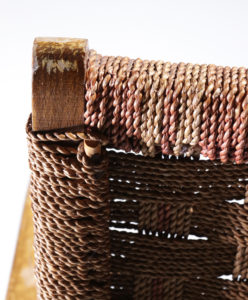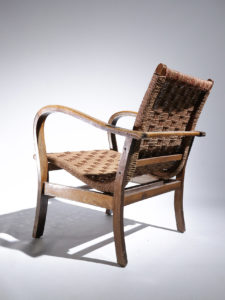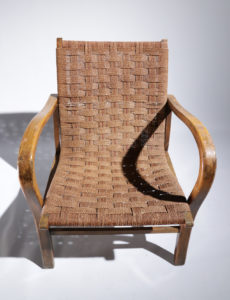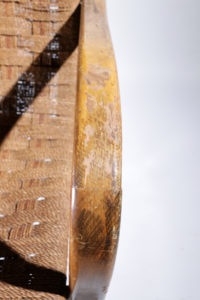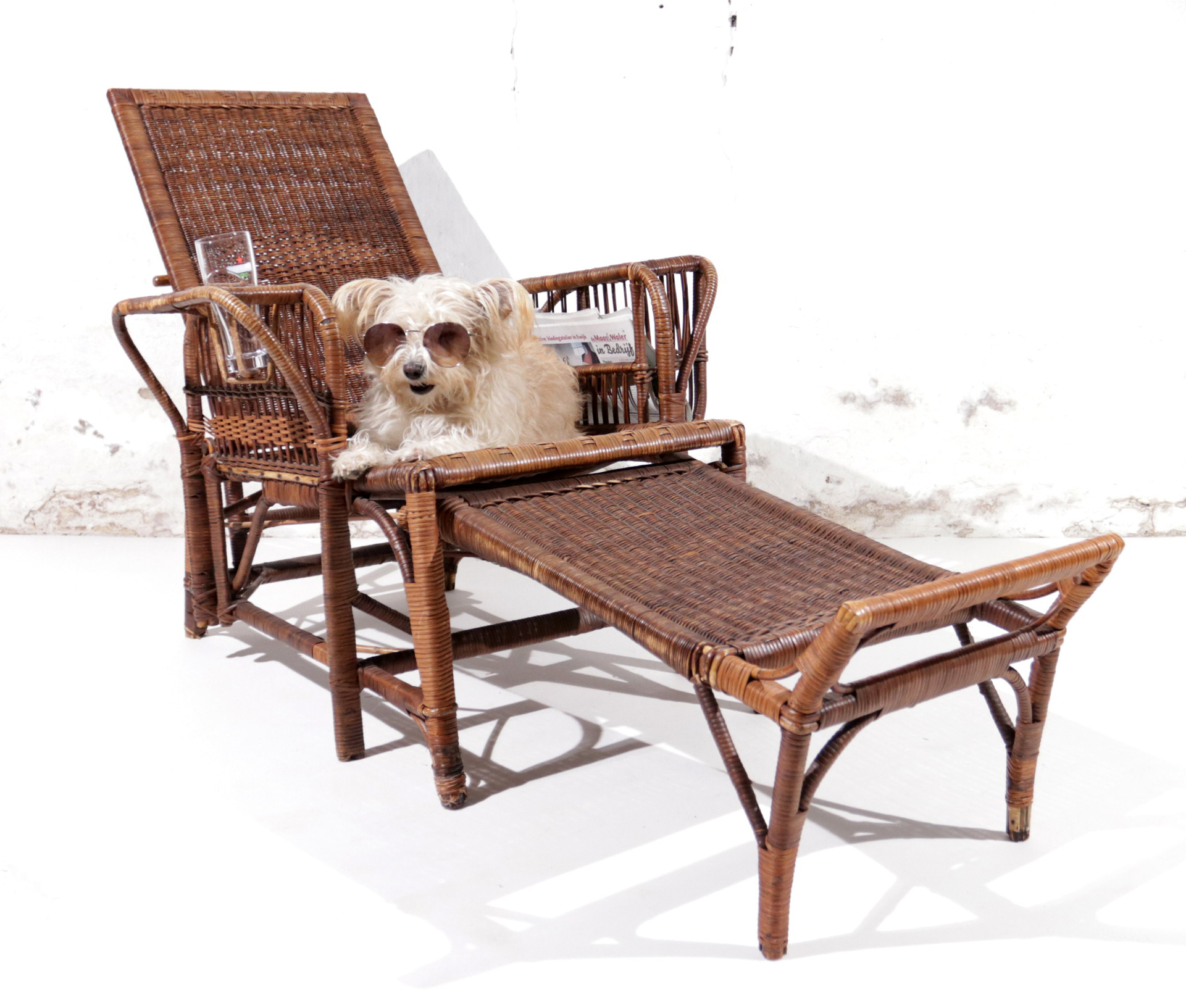
Rare and beautiful Bauhaus Lounger designed by Erich Dieckmann ca 1930.
Made of Rattan and Bamboo with steel parts that have a great patina.
In the armrest there is a cupholder and on the other side you can store your newspaper or magazine.
Almost a museum piece these days!
Erich Dieckmann was one of the preeminent furniture designers of the Bauhaus and, like Marcel Breuer, was experimenting with steel tubing, standardization, and geometric forms in the 1920s and 1930s. Dieckmann was born in present-day Poland in 1896. He studied architecture from 1918 to 1920 at the Technical University of Gdansk in Poland and served a carpentry apprenticeship at the Bauhaus in Weimar from 1921 to 1925. When the Bauhaus moved to Dessau in 1925, he remained in Weimar and became the head of the carpentry workshop at the State University of Applied Sciences until 1930.
Throughout the 1930s, he designed furniture as well as worked for various carpentry workshops and consulted for interior and craft design companies. Dieckmann’s furniture is often characterized by quality hardwoods, cane matting and geometric frames that link the armrests and legs, creating a unique runner construction. Designing affordable, enduring pieces that could be mass-produced was also one of his key efforts. Dieckmann passed away in Berlin in 1944, leaving behind an iconic body of Bauhaus-inspired seating.
* Price on request *
